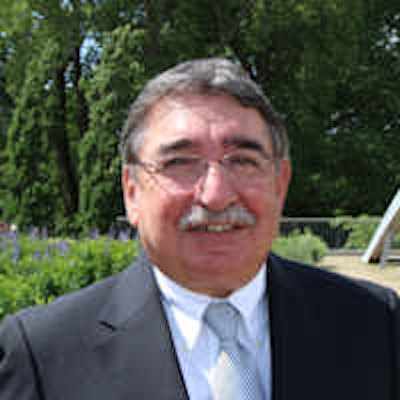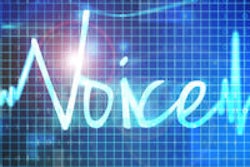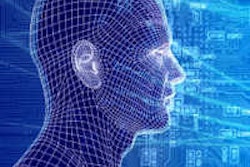
Besides simplifying workflow, the key future goal in healthcare IT is to standardize and unify systems, and this reaches well beyond PACS. It includes integrating the hospital and RIS with the long-term archive, as well as communicating better with departments, according to the Vienna-based pioneer and early adopter Dr. Walter Hruby.
To achieve this goal, standards for interfacing have to be introduced at a global level, clinical prefetching must become easily manageable, and the transmission of large volumes of data from modalities such as CT have to be more speedy, he noted.
 PACS pioneer Dr. Walter Hruby spoke about innovation in radiology at the joint congress of the German and the Austrian Radiology Societies, held in Hamburg, Germany in late May.
PACS pioneer Dr. Walter Hruby spoke about innovation in radiology at the joint congress of the German and the Austrian Radiology Societies, held in Hamburg, Germany in late May.
"Exchanging patient information across disciplines and departments, e.g. in tumor boards, has to become fast and simple. There are numerous standards initiatives out there, such as HL7 and IHE [integrating the healthcare enterprise]," said Hruby, who was awarded honorary membership from the Austrian Society of Radiology at the recent joint congress of the German and the Austrian Radiology Societies, held in Hamburg, Germany.
In his various roles, he has been active in many working groups, but he's concerned there are still no unified sets of formats, data privacy implementations, or information exchange processes manifesting themselves across borders for a universal electronic patient record. Standardizing these aspects is essential in the context of quality-oriented patient care, according to Hruby, head consultant of the radiology department at the Danube Hospital in Vienna.
Developments in banking provide orientation here, because the use of credit cards has been implemented at a global level.
"Why did healthcare policymakers not ask a credit card provider to realize this for information input, presentation, and storage functions utilizing patient IDs -- in lieu of reinventing the wheel in each country? If policymakers had ever asked users, this is the suggestion they might have been given," he said, adding that patients should decide which of their clinically relevant records should be accessible through electronic IDs, providing essential information in emergencies.
Hruby, a professor of radiology and past president of the Austrian Radiology Society, was a key European figure in PACS in the late 1980s, when the 1,000-bed hospital, which carries out 190,000 radiology exams annually, went filmless.
"We did the planning for our first PACS back in 1988; our pilot was operational in 1991, and we implemented the system in our daily routine in 1992," he recalled. "We have been looking at advancing and optimizing the system continuously ever since. We invite colleagues to hear about our experiences at the Danube."
 At DRK 2014, Hruby was awarded honorary membership of the Austrian Society of Radiology (by President Dr. Werner Jaschke) for his many major achievements, including in the field of healthcare IT.
At DRK 2014, Hruby was awarded honorary membership of the Austrian Society of Radiology (by President Dr. Werner Jaschke) for his many major achievements, including in the field of healthcare IT.The teams at the Danube, through various phases, have worked toward optimizing the IT network and the acquisition, reading, and viewing of images.
"We drove for the integration of the PACS and RIS from Siemens with the HIS [hospital information system] by Systema. The largest of our optimization projects was Phoenix II," he said. "It started five years ago and ended last year. We collaborated closely with another hospital in Vienna and with Munich University's Grosshadern Clinic."
Plug-in solutions
Interplay between the systems is the order of the day, as are postprocessing as well as large-volume data handling for cardiac CT, cardiac MRI, spectroscopy, and trauma cases in an integrated workstation, Hruby explained. Access to TERA Archive -- the electronic patient records repository maintained by Vienna's municipal hospitals -- speech recognition for report writing, and dose measurement feeding and statistics are also part of the comprehensive approach. The radiologist's report is fed back into the TERA Archive record and made available to clinical peers.
Service level agreements define what aspects of the solution are serviced 24/7 by which organization, he continued. In the Danube's trauma, accident and emergency, and neonatology departments, all of this works very well, even on weekends, when an average 800 patients are cared for. The solution is embraced by staff thanks to its convenient handling and resilience, and all patient information is natively electronic and communication with cooperating general practitioners is organized electronically via a portal, noted his radiologist colleague Dr. Michael Urban.
 At the Danube Hospital, the integration of the PACS, HIS, and RIS has taken about five years. Today, all patient information is natively electronic, explained Dr. Walter Hruby and fellow radiologist Dr. Michael Urban.
At the Danube Hospital, the integration of the PACS, HIS, and RIS has taken about five years. Today, all patient information is natively electronic, explained Dr. Walter Hruby and fellow radiologist Dr. Michael Urban."We have achieved a lot, but even more still needs to be done," Hruby concluded. One unified user interface for all IT-based systems, fewer mouse clicks, and a multimodality workspace form part of his vision of the future. Moreover, IT will never be more than just another tool; for instance, teleradiology is certainly useful for second opinions, but it should not serve to replace the radiologist who works in direct contact with patients and his or her clinical peers, he stressed.



















